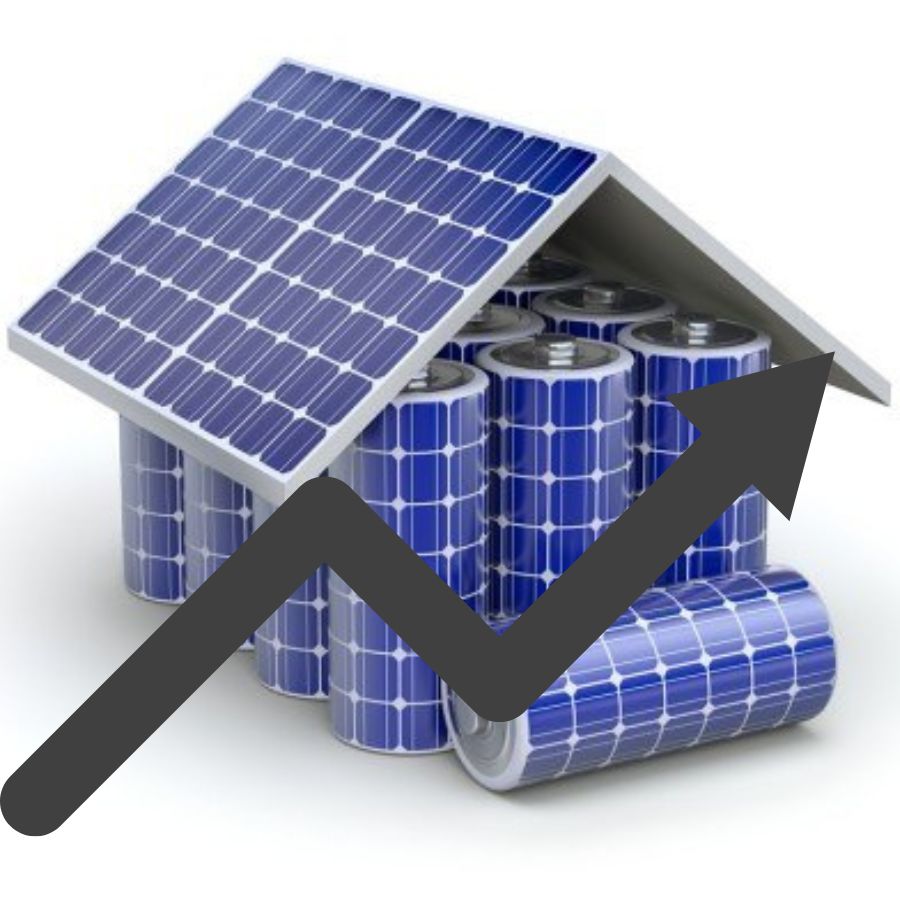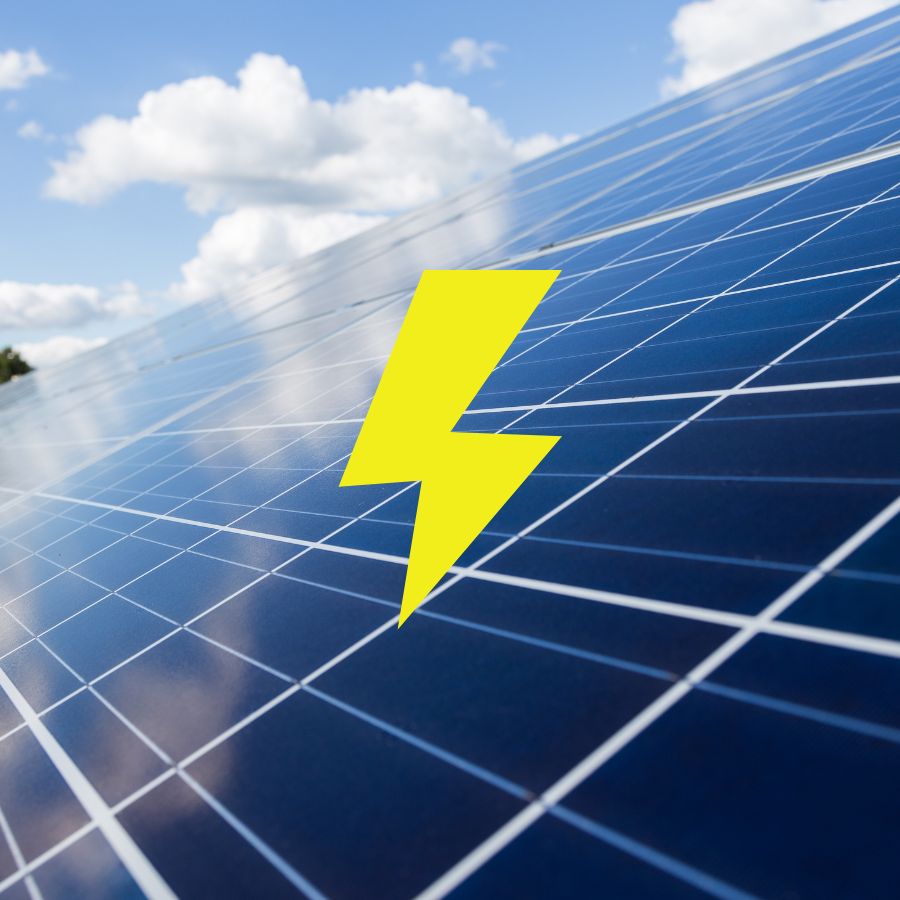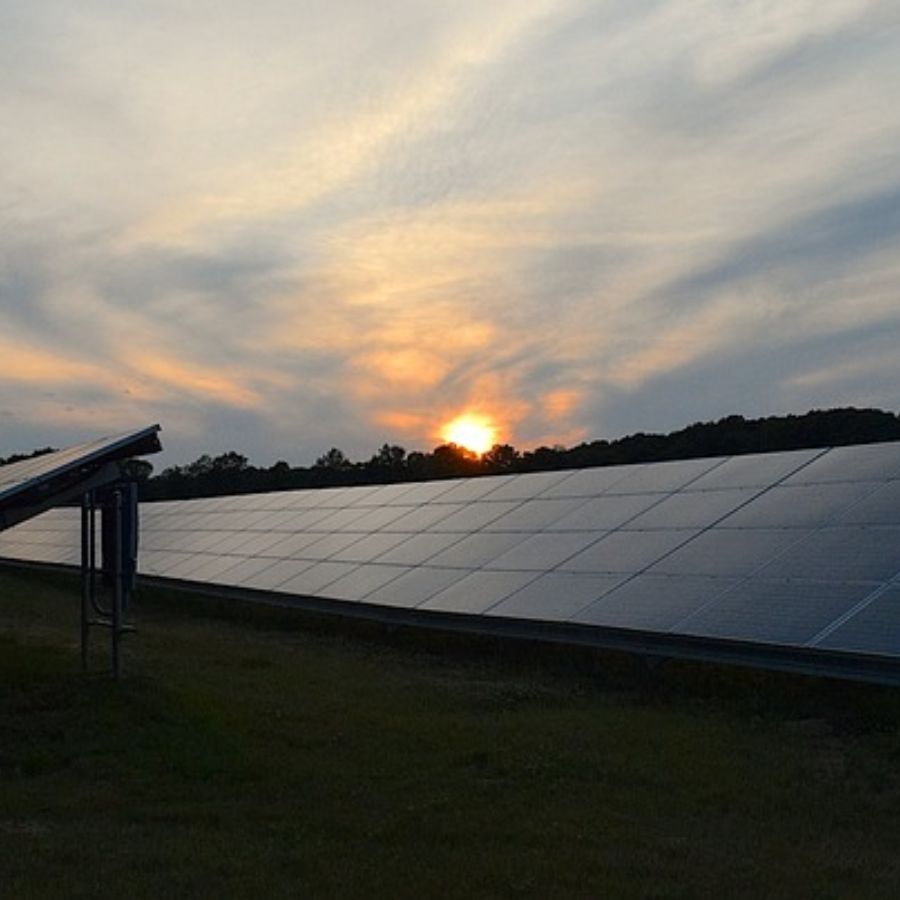How do you tell the solar panel Watts per square meter? Solar panel efficiency determines the solar power system’s overall performance and effectiveness. Efficient solar panels work efficiently and can convert a higher percentage of sunlight into usable electricity, maximizing the solar panel output of a solar panel system. Install solar panels.
Watts per square meter is a metric used to measure the power output of solar panels relative to their surface area. It represents a solar panel’s electricity per square meter under specific conditions.
This measurement helps assess the efficiency and productivity of solar panels, allowing consumers to compare different panels and make informed decisions when selecting solar energy solutions.
Understanding Solar Panel Efficiency

Solar panel efficiency refers to the ability of a solar panel to convert sunlight into usable electrical energy and how much energy you can expect from the system. It is a percentage, and one calculates it by dividing the solar panel’s power output by the sunlight it receives.
For example, if a solar panel has an output of 300 watts and receives 1,000 watts of sunlight, its efficiency would be 30% (300/1000 x 100).
Factors Affecting Solar Panel Efficiency
1. Material quality
The quality of materials used in solar panel manufacturing directly impacts their efficiency and how much energy they can generate. Higher-efficiency solar panels often utilize advanced semiconductor materials, such as monocrystalline or polycrystalline silicon, with better light absorption properties and lower energy loss, resulting in higher efficiency and more kilowatt-hours.
2. Temperature
Extreme temperatures can negatively affect solar panel efficiency. As the temperature rises, the electrical resistance within the panel increases, leading to a decrease in solar panel output power.
Some solar panels are designed with cooling mechanisms or incorporate materials that are less prone to temperature-related efficiency losses to mitigate this.
3. Shading
Shading caused by nearby objects, such as buildings, trees, or even dirt accumulation, can significantly impact solar panel efficiency.
When shaded, certain panel sections receive reduced sunlight, reducing the overall output. It is crucial to install solar panels in open areas to maximize efficiency.
4. Dust and Dirt Accumulation
Accumulated dust, dirt, or debris on the surface of solar panels can hinder the absorption of sunlight and decrease their efficiency. Regular cleaning and maintenance are essential to maintain peak performance. Some solar panels are designed with self-cleaning mechanisms or coatings that reduce dust accumulation, improving their efficiency over time.
Watts per Square Meter Explained
Watts per square meter is a measurement that quantifies the power output of solar panels relative to their surface area. It indicates how much electricity a solar panel produces per space unit, allowing for comparisons between different panel types and sizes.
The higher the watts per meter square, the more power a solar panel can generate from a given area. It might help you decide how many solar panels you need.
Significance of Watts per Square Meter in Solar Panels
Watts per square meter is a metric for assessing the productivity and efficiency of solar panels. It helps consumers determine the amount of power they can expect from a specific panel configuration.
By comparing the watts per meter square of different solar panels, individuals can make informed decisions about how many solar panels they may need to meet their electricity demands.
Calculating Watts per Square Meter
1. Determining the Total Watts Generated
To calculate the total watts generated by solar cells, multiply the power output of a single panel by the number of panels in the system.
For example, if each panel has an output of 300 watts, and there are 20 panels in the system, the total watts generated would be 6,000 (300 watts * 20 panels).
2. Dividing by the Total Panel Area
To determine the watts per square meter, divide the total watts generated by the total surface area covered by the solar panels. For instance, if the combined size of the 20 panels is 30 square meters, the watts per square meter would be 200 (6,000 watts / 30 square meters).
By calculating the watts per meter square, individuals can assess the efficiency of their domestic solar panel systems and compare it with the performance of other systems. This metric allows for better decision-making regarding expanding the system or selecting more efficient solar panels to maximize power generation.
Typical Watts per Square Meter for Different Solar Panels
A. Monocrystalline Panels
Monocrystalline solar panels are renowned for their exceptional efficiency and elegant design. They are made from a single crystal structure, producing better electron flow and more excellent energy conversion.
On average, monocrystalline panels can produce between 150 to 220 watts per square meter, making them a popular choice for residential and commercial solar installations.
B. Polycrystalline Panels
Polycrystalline solar panels consist of multiple silicon crystals, which are fused. Although slightly less efficient than monocrystalline panels, they offer a cost-effective option for solar power generation. Polycrystalline panels typically produce between 130 to 180 watts per square meter.
C. Thin-Film Panels
Thin-film solar panels go through a different manufacturing process than crystalline panels. They are typically more flexible and lightweight, allowing for versatile installation options.
However, their efficiency is lower compared to crystalline panels. Thin-film panels typically produce between 80 to 120 watts per square meter.
D. High-Efficiency Panels
High-efficiency solar panels, such as those incorporating advanced technologies like heterojunction or multi-junction cells, can achieve more incredible watts per square meter. So you can opt for this type of solar technology.
These panels can reach 20% or higher efficiencies, producing more than 220 watts per square meter. Although more expensive, high-efficiency panels are better for installations with limited space or when maximizing power output is a priority.
Factors Affecting Watts per Square Meter
Solar Irradiance
Solar irradiance refers to the amount of sunlight energy that reaches the surface of the Earth. It directly affects the watts per meter square produced by solar panels. Regions with higher solar irradiance receive more sunlight, increasing solar panel output.
Geographic location, weather conditions, and time of day influence solar irradiance levels. Areas with abundant sunshine, such as deserts or sunnier regions, tend to have higher watts per square meter than regions with less solar exposure.
Angle of Incidence
The angle of incidence refers to the angle at which sunlight strikes the surface of a solar panel. The ideal angle of incidence is when the sunlight hits the panel perpendicularly (at a 90-degree angle).
When the angle deviates from this optimal position, the effective energy absorption decreases, reducing the watts per square meter produced. Solar panel installation professionals consider the angle of incidence during the design and placement of panels to maximize energy capture.
Seasonal Variations
Seasonal variations affect the availability and intensity of sunlight, impacting the watts per square meter produced by solar panels. The sun’s angle changes throughout the year in certain regions due to the Earth’s tilt. During winter, when the sun is lower in the sky, solar panel output may decrease compared to summer, when the sun is higher. These seasonal variations are vital when estimating the solar panel system capacity and the expected watts per meter square production throughout the year.
Bottom Line
In conclusion, understanding solar panel watts per square meter is vital for harnessing the full potential of solar energy. By evaluating factors such as solar irradiance, angle of incidence, tilt angle, and orientation, one can optimize the watts per square meter produced by solar panels.
Different panel types, such as monocrystalline, polycrystalline, thin-film, and high-efficiency panels, have varying typical watts per meter square outputs. Maximizing watts per square meter can be achieved through optimal panel placement, regular cleaning and maintenance, utilizing tracking systems, and upgrading to more efficient panels. Embracing solar power and leveraging the solar energy panels produced from the sun’s rays can significantly contribute to a sustainable future powered by renewable energy and innovative solar cells.



Leave a Reply